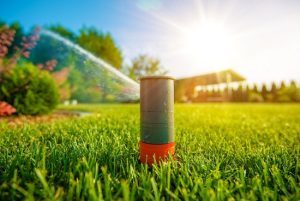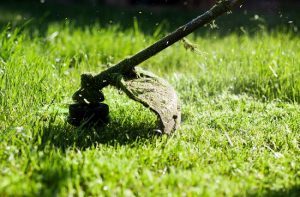 Even if there are more important things in life aside from having the perfect lawn, working towards achieving that goal will provide you with a sense of satisfaction and accomplishment. Plus, you’ll have a personal oasis that you and your loved ones can enjoy. To get there, you have to deal with the most common lawn problems and some lawn care tips on how to address them.
Even if there are more important things in life aside from having the perfect lawn, working towards achieving that goal will provide you with a sense of satisfaction and accomplishment. Plus, you’ll have a personal oasis that you and your loved ones can enjoy. To get there, you have to deal with the most common lawn problems and some lawn care tips on how to address them.
Lawn Care Tips For Common Problems
Thin Grass
Everyday events like games of tag, playing with your dogs, and even the harsh weather can cause thinning grass. You may have to overseed using a certain product that would provide the perfect combination of soil improver, fertilizer, and grass seed required to thicken up your lawn grass. You should mow the lawn using the lowest setting, rake it well, and then add the appropriate product to the spreader by following the directions written on the label. Water it everyday for two weeks and then continue mowing the grass at the appropriate mowing length, depending on the grass type.
Bare Spots
If your grass is in good condition but has bare spots, there’s a different lawn care Myrtle Beach tip that you can follow. You can treat the bare spots using a commercial product. Get rid of the dead grass and then loosen up the hard soil using a hand rake. Then apply the product according to the directions indicated in the label and then water it thoroughly. Water it daily until the new grass grows 2” tall, then you could go back to treating the spots the exact way as the rest of your lawn.
Brown Spots
Brown spots on your lawn are a bit more complicated because there are many things that may be causing the spots like fungus or grubs, dog urine, or weed dieback. So, before you apply the commercial product, make sure you know what the problem is.
Grubs in the Lawn
If you have seen more than a few c-shaped, and fat grubs in the soil as you dig, then you need to do something about it right away. Beetles pop up during early summer. They eat plants and lay eggs in the soil. The eggs hatch during early summer and the little critters start to eating plants and grass roots. So you have to apply the product early spring or early summer. All you need to do is fill the spreader and apply it to your lawn. Just make sure that it’s dry. Don’t forget to follow the directions indicated in the label and add water in order to activate the product.
Weeds are Out of Control
Any lawn care expert will tell you that they hate weeds. Fortunately, there are things you can do to avoid this problem in the first place. That’s by keeping your lawn grass in good health. Follow the appropriate mowing tips, fertilize it regularly, give it the right amount of water, and call a lawn care specialist if necessary.
Crabgrass
Crabgrass is a well-known trouble maker and the best way to deal with it is to stop it from growing in the first place. You should protect your grass from crabgrass using a product that can kill it down to its roots without harming your lawn.
Yellow Grass
If you can see yellow grass in your lawn, it’s probably because you incorrectly applied your fertilizer. You can make sure that you don’t miss any spot by overlapping slightly when you use the spreader. Grass that didn’t get fertilizer will turn yellow. You just have to improve your application technique in order to avoid this lawn problem.
Call Conner’s Lawn Care Service if you need help in taking care of your lawn.
Conner’s Lawn Care Service
Myrtle Beach, SC
843-504-4901
http://connerslawncare.com/
 Spring
Spring  Keeping your lawn healthy and lush needs attention all throughout the year. Knowing what you can do and when you should do it is an important part of
Keeping your lawn healthy and lush needs attention all throughout the year. Knowing what you can do and when you should do it is an important part of  A lot of homeowners tend to ignore that their front yard is a safe place where their kids can play. After all, your home must be a safe haven where your family can live safely and comfortably. But when people have kids, they soon find out that it is crucial to be vigilant regarding safety in all the areas where their kids play, even if that means their own lawn or home. There are some methods you can use to make sure that your kid is safe when playing in your yard. But it all boils down to proper
A lot of homeowners tend to ignore that their front yard is a safe place where their kids can play. After all, your home must be a safe haven where your family can live safely and comfortably. But when people have kids, they soon find out that it is crucial to be vigilant regarding safety in all the areas where their kids play, even if that means their own lawn or home. There are some methods you can use to make sure that your kid is safe when playing in your yard. But it all boils down to proper